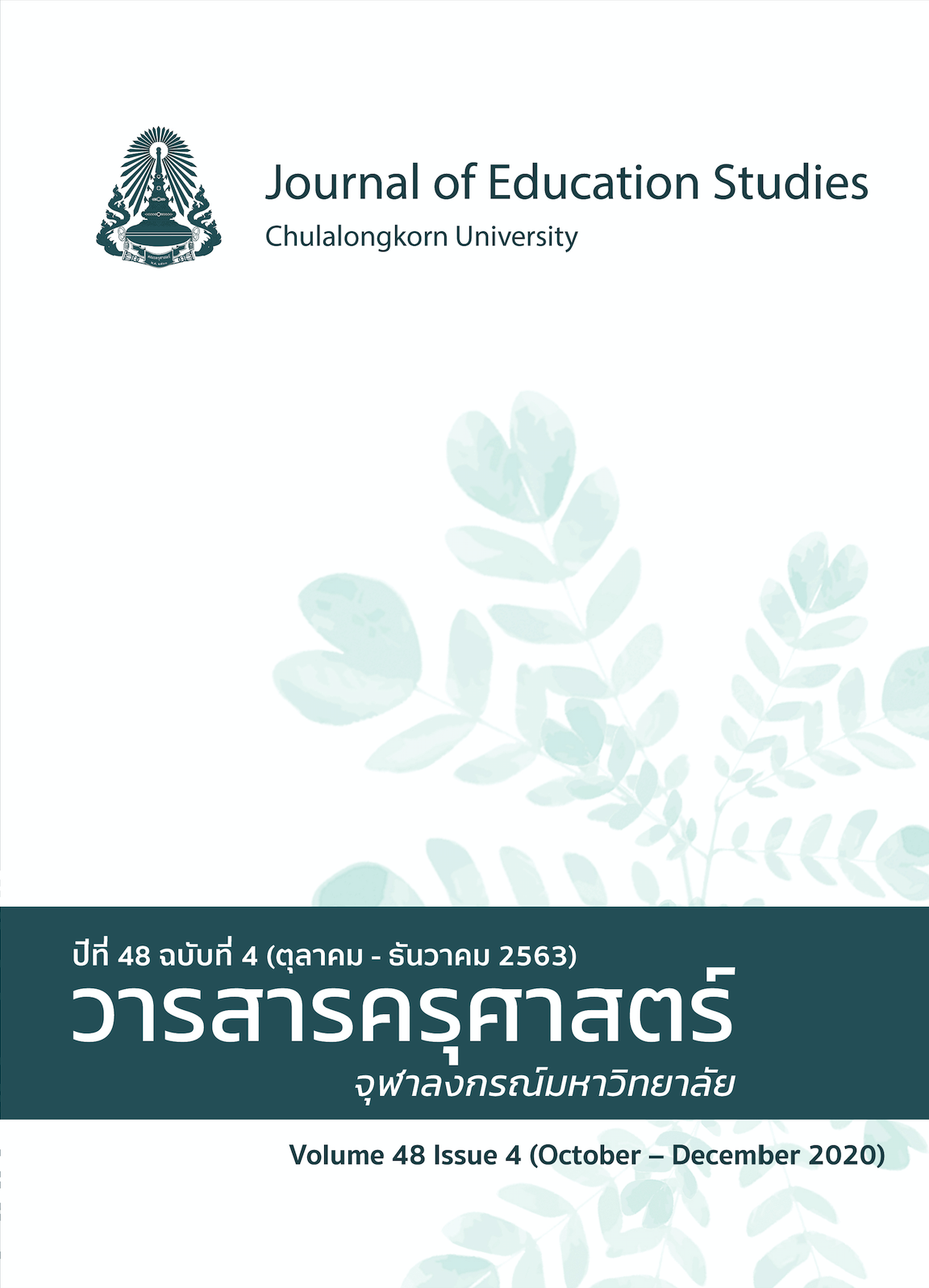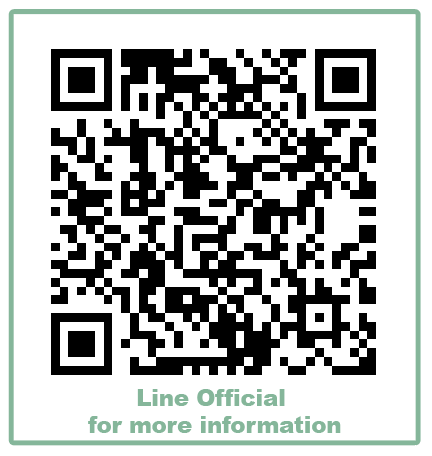Creative Leadership for Primary School Principals to Promote Teachers’ Creativity in Guangxi, China
Keywords:
creative leadership, primary school principals, teachers’ creativity, Guangxi – ChinaAbstract
The objectives of this research were to study the conceptual framework and the current and desirable state of creative leadership by primary school principals to promote teachers’ creativity. This study employed mixed-method research and involved 636 school principals and teachers from 106 schools as samples. The instruments used in this study were a questionnaire and a conceptual framework evaluation form of suitability and feasibility. The data was analysed by using frequency, percentage, average, standard deviation. The results showed that 1) the conceptual framework of creative leadership by primary school principals to promote teachers’ creativity consists of roles of creative leadership involved three areas including 1.1) to facilitate the creative abilities of every teacher at school, 1.2) to form and facilitate dynamic creative teacher teams, and 1.3) to promote a school culture of innovation. Further, the results showed 2) the current state of the creative leadership by primary school principals to promote teachers’ creativity in Guangxi, China was at a middle level overall (M = 3.37). The desirable state was at the highest level overall (M = 4.81). When considering each aspect, a principal’s ability to facilitate the creative abilities of every teacher at school to promote the teachers’ creativity was at the highest average (M = 4.82).
References
Amabile, T. M., Conti, R., Coon, H., Lazenby, J., & Herron, M. (1996). Assessing the work environment for creativity. Academy of Management Journal, 39(5), 1154-1184.
Basadur, M. (2004). Leading others to think innovatively together: Creative leadership. The Leadership Quarterly, 15(1), 103-121.
Cao, C., Suttmeier, R. P., & Simon, D. F. (2006). China's 15-year science and technology plan. Physics Today, 59(12), 38-43.
Chu, H., & Cravens, X. C. (2012). Principal professional development in China: Challenges, opportunities, and strategies. Peabody Journal of Education, 87(2), 178-199.
Colley, K. M. (2015). Cultivating creativity: The practice of teaching for creativity in the elementary classroom [Doctoral dissertation]. Digital Commons @ DU. https://digitalcommons.du.edu/etd/134/
Craft, A., Cremin, T., Hay, P., & Clack, J. (2014). Creative primary schools: Developing and maintaining pedagogy for creativity. Ethnography and Education, 9(1), 16-34.
Cui, N. (2015). On curriculum leadership of rural primary school principals in Guangxi. Guangxi Teachers Education University. (崔乃超. (2015). 广西农村小学校长课程领导力研究 . 广西师范学院.)
Feng, D. (2006). China's recent curriculum reform: Progress and problems. Planning and Changing, 37(1/2), 131-144.
Gu, M. (1999). Basic education and innovation spirit. The Chinese Society of Education, (2), 23-23. (顾明远. (1999). 基础教育与创新精神. 中国教育学刊, (2), 23-23.)
Gu, M. (2010). A blueprint for educational development in China: A review of “the national guidelines for medium-and long-term educational reform and development (2010–2020)”. Frontiers of Education in China, 5(3), 291-309.
Gu, S., Lundvall, B.-Å., Liu, J., Malerba, F., & Schwaag Serger, S. (2009). China's system and vision of innovation: An analysis in relation to the strategic adjustment and the medium-to long-term S&T development plan (2006–20). Industry and Innovation, 16(4-5), 369-388. https://doi.org/10.1080/13662710903053631
Harris, A. (2009). Creative leadership: Developing future leaders. Managing Education, 23(1), 9-11. https://journals.sagepub.com/doi/pdf/10.1177/0892020608099076
Hewitt, D., & Tarrant, S. (2015). Innovative teaching and learning in primary schools. SAGE.
Huang, T., & Wiseman, A. W. (2011). The landscape of principal leadership development in Mainland China: An analysis of Chinese and English research. In T. Huang, & A. W. Wiseman (Eds.), The impact and transformation of education policy in China (International perspectives on education and society) (Vol. 15, pp. 125-151). Emerald Group. https://doi.org/10.1108/S1479-3679(2011)0000015009
Jarvis, T. L. (2015). A mixed-methods analysis on creative leadership and Missouri school administrators [Doctoral dissertation, Lindenwood University]. PQDT OPEN. https://pqdtopen.proquest.com/doc/1733692410.html?FMT=ABS
Jurevicius, O. (2013). PEST & PESTEL Analysis,". Strategic Management Insight, 13, 2013.
Levesque, L. (2011). Breakthrough Creativity: Achieving top performance using the eight creative talents. Nicholas Brealey.
Ma, Q., Luo, Q., & Liang, K. (2014). Strategies to improve the professional quality of rural primary school teachers. Guangxi Education, (45), 20-20. (马启悦, 罗庆文, & 梁科劲. (2014). 提高农村小学教师专业素养的策略. 广西教育, (45), 20-20.)
Mainemelis, C., Kark, R., & Epitropaki, O. (2015). Creative leadership: A multi-context conceptualization. The Academy of Management Annals, 9(1), 393-482.
National Advisory Committee on Creative and Cultural Education. (1999). All our futures: Creativity, culture and education. HMSO London.
Peterson, F. J. (2013). Creative leadership signposts in higher education: ...turn left at the duck pond!. Springer Science & Business Media.
Qian, H., & Walker, A. (2011). Leadership for learning in China: The political and policy context. In T. Townsend, & J. MacBeath (Eds.), International handbook of leadership for learning (pp. 209-223). Springer. https://doi.org/10.1007/978-94-007-1350-5_14
Robinson, K. (2006, February). Do schools kill creativity?. TED Talks. https://www.ted.com/talks/sir_ken_robinson_do_schools_kill_creativity/transcript?language=en
Robinson, K. (2009). The element: How finding your passion changes everything. Penguin.
Robinson, K. (2011). Out of our minds: Learning to be creative. John Wiley & Sons.
Robinson, K., & Aronica, L. (2015). Creative schools: The grassroots revolution that's transforming education. Penguin.
Siribanpitak, P. (2012). Education management for sustainable development: The basic study of the economic, social and environment. Chulalongkorn University.
Sternberg, R. J. (2006). The nature of creativity. Creativity Research Journal, 18(1), 87-98.
Stoll, L., & Temperley, J. (2009). Creative leadership: A challenge of our times. School Leadership and Management, 29(1), 65-78.
Tian, Y. (2007). A study on the classroom environment and the cultivation of students' creativity in primary and secondary schools. Tianjin Normal University: Basic Education, 8(2), 5-10. (田友谊. (2007). 中小学班级环境与学生创造力培养研究. 天津师范大学学报: 基础教育版, 8(2), 5-10.
United Nations Development Programme. (2013). Creative economy report 2013–special edition: Widening local development pathways. United Nations Development Programme.
Wang, J. (2010). The school system and the development of students' creativity [Unpublished doctoral dissertation]. East China Normal University. (王佳佳. (2010). 论学校制度与学生创造力的发展 [Unpublished doctoral dissertation]. 上海: 华东师范大学).
Wang, J. (2011). The educational value orientation of creativity development. Nanjing Journal of Social Sciences, (7), 127-131. (王佳佳. (2011). 论创造力发展的教育价值导向. 南京社会科学, (7), 127-131.)
Wei, f. (2015). Cause analysis and countermeasures for students lacking innovation in minority areas. Guangxi Education, (17), 8-9. (韦凤. (2015). 少数民族地区学生创新不足的原因分析及对策. 广西教育, (17), 8-9.)
Wu, H., Lin, Z., & Xie, C. (2010). The four major disadvantages of primary school principals in Underdeveloped Areas. Education Research Monthly, (8), 49-51. (吴海峰, 林志雄, & 谢存德. (2010). 欠发达地区小学校长的四大弱势. 教育学术月刊, (8), 49-51.)
Xiwei, Z., & Xiangdong, Y. (2007). Science and technology policy reform and its impact on China's national innovation system. Technology in Society, 29(3), 317-325.
Zhang, H., & Zhang, J. (2011). On the primary and high school teacher cooperation over the past thirty years. Hebei Normal University/ Educational Science Edition, 13(4). (张华龙, & 张菊风. (2011). 三十年来我国中小学教师合作研究的梳理与反思. 河北师范大学学报/教育科学版, 13(4).)
Zhang, Q. (2007). A preliminary study on teacher cooperation. Success (Education), (3), 94-94.
Zhang, W. (2012). On school culture and students' creativity development. The Chinese Society of Education, (2), 7-11. (张武升. (2012). 试论学校文化与学生创造力开发. 中国教育学刊, (2), 7-11.)



